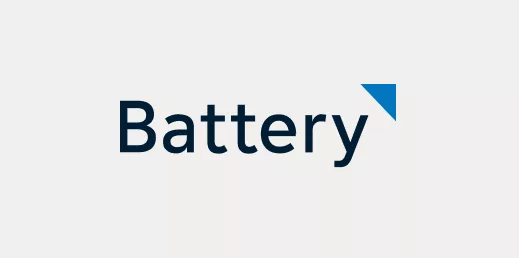Nvidia’s digital twin of the planet will transform weather predictions; scientists have used deep learning to identify an antibiotic to kill the dreaded antibiotic-resistant bacteria in hospitals; and we’re advancing faster towards clean energy from nuclear fusion.
And this is just the beginning of how generative AI models are ushering a new era in science, writes Google’s former CEO Eric Schmidt in MIT Technology Review.
“The reverberations of this shift will be felt far outside the lab; they will affect us all.”
Hello and welcome back to our MRR!
And a warm welcome to new subscribers!
We are staying on the all-pervasive AI theme.
Content glut is degrading the web
Information overload has been a growing problem for decades, but this has escalated alarmingly now. It’s everywhere, from spammy websites to junk on ecommerce sites and loss of credibility in search results. We may see the birth of a new web with new possibilities, but first we have to bear the birth pangs.
A Verge article summarizes the multiple ways in which generative AI models are degrading the web by making it cheaper to generate lower-quality content. If the trend continues without corrective moves, it’s going to get harder to find information that is useful.
The weirdness of an AI-made short film
MIT Technology Review takes us into the surreal world of AI film-making. A Detroit-based video company has used OpenAI’s DALL-E 2 to make a 12-minute film called Frost. Take a look at how realistic it is and where it gets weirdly deviant.
Small language models are beautiful
The large language models (LLMs) that power GenAI tools like ChatGPT are getting larger. Where will it hit the cost limit? GPT-3 had 175 billion parameters, crunched through hundreds of billions of words, and cost around $5 million. GPT-4 released this year has a trillion parameters and OpenAI boss Sam Altman put its cost of development at $100 million. Research firm Epoch AI estimated that the computing power needed for training models was doubling every 10 months.
An Economist analysis says the “bigger is better” approach is running out of road and researchers are trying alternative ways. One option is to cut the number of parameters but use more data, which would take longer but be less expensive. Another option is to use fuzzy mathematics to round off numbers to fewer decimal places. New tricks are also being used to fine-tune the creation of smaller models for specific purposes from the LLMs.
Meanwhile, OpenAI has announced general availability of GPT-4 through its paid API. GPT-4 can generate text (including code) and accept both image and text inputs — an improvement over its predecessor GPT-3.5, which only accepted text. Existing OpenAI API developers have access to GPT-4 and that availability will be increased for new developers “depending on compute availability.”
“We envision a future where chat-based models can support any use case,” OpenAI says in a blog post.

SaaSBoomi report on embracing AI
Our annual SaaS Landscape Report, with knowledge partner McKinsey, delves into how GenAI redefines the SaaS model. The report, being released on July 27 in Bangalore, explores the opportunities GenAI unlocks and helps chart out a path to harness the potential of India’s SaaS sector. Click here if you’d like to attend the event.
Vertical SaaS to vertical AI
The logical extension of vertical SaaS is vertical AI, Index Ventures partner Paris Heymann tells TechCrunch+. While some business applications of AI will be horizontal, “meaning they can be used by customers in any industry,” Heymann predicted that many AI applications will be vertical, or industry-focused.
The domain expertise and deep understanding of their customers make vertical SaaS founders better placed to add value with GenAI tools, writes Yonatan Mandelbaum, principal at TLV Partners, in a blog post.
How to listen to customers
For more on the secrets to vertical SaaS success, Kausambi Manjita, co-founder of Mason, shares insights to the retail tech startup’s rapid growth over the past 10 months. Here’s a quote from her in a SaaSBoomi blog post:
“As technologists, sometimes we have a bias. We ask leading questions to customers in such a way that we get the answer we want. I had to learn how to take out that bias. When we spoke to brands in North America, we didn’t have an agenda. We let the customers tell us their needs and formed a hypothesis around it,” says Manjita, who loves a book on this subject called The Mom Test by Rob Fitzpatrick.
Building GenAI moats in B2B
How do you build defensible moats in an era where “the cost of intelligence is going to zero”? A recent episode of the Acquired podcast tackles this question with Jake Saper, partner at Emergence Capital. Saper also put out a blog post on how founders can capitalize on the GenAI opportunity and at the same time mitigate the risk of a “bad AI trip”.
All in on AI
A new book by Deloitte’s Nitin Mittal and academic Tom Davenport, All in on AI, dives into how smart companies are incorporating GenAI into their processes and strategies. It goes into what the leading adopters of this new technology, such as Anthem, Ping An, Airbus, and Capital One, are doing.
AI startups depend on big brothers
Bootstrapped garage startups becoming giants may get harder in the world of AI, says an article in The New York Times. The big companies like Google, Microsoft, and Amazon are “controlling the computing power and they are selecting who gets it,” says David Katz, a partner with Radical Ventures.
GenAI startup valuations skyrocket
Databricks announced the acquisition of two-year-old AI startup MosaicML for $1.3 billion late last month. MosaicML has built a platform for organizations to train large language models and deploy GenAI tools based on them. Its last funding round valuation was $222 million, which means it got a 6x leap with its exit, reports TechCrunch. Following this acquisition, CBInsights has assessed the valuations of top GenAI companies and identified unicorns in the space that have an even higher valuation per employee than MosaicML.
Non-spammy outbound marketing
Formerly the regional marketing lead for Carousell and now helping build Floik in Southeast Asia, Priyadarshini Seevaratnam is no stranger to marketing. But Vengat Krishnaraj, co-founder of Klenty, “really woke me up (and many others)” to the possibilities of outbound marketing, she writes in a SaaSBoomi blog post. “Many of us still do outbound marketing but are not sure how to make it feel natural and not look like spammy outreach.”
Seevaratnam goes into five takeaways from a recent SaaSBoomi roundtable that Vengat led in Singapore.
Acceleration, SGX style
Another participant in a SaaSBoomi program, Nishchala Agnihotri, product manager at Hivel.ai, shares her experience in a blog post. Hivel was in the fourth cohort of SGx, a 16-week intense mentorship to accelerate the growth of selected startups.
“Being a part of this cohort helped me learn the operating system of growth for the 0 to 1 startup journey. It means the full cycle – from discovering the value proposition to delivering that derived value proposition into the messaging and to the final identified ideal customer profile,” she writes.
With love,
Malavika Velayanikal
That’s all for now, folks. Hat tips to SaaSBoomi’s MRR volunteers Anand Hrushikesh, Sumit Chakraberty, and Varun Thirumalai for helping me shape this newsletter.
A big thank you to our ecosystem partners: Accel, Peak XV, Westbridge, B Capital, March Capital, and Eight Roads for keeping our lights burning.
And thank you, dear reader, for reading this newsletter! If you liked it, why not share it with other founders to subscribe for free? ❤️

























